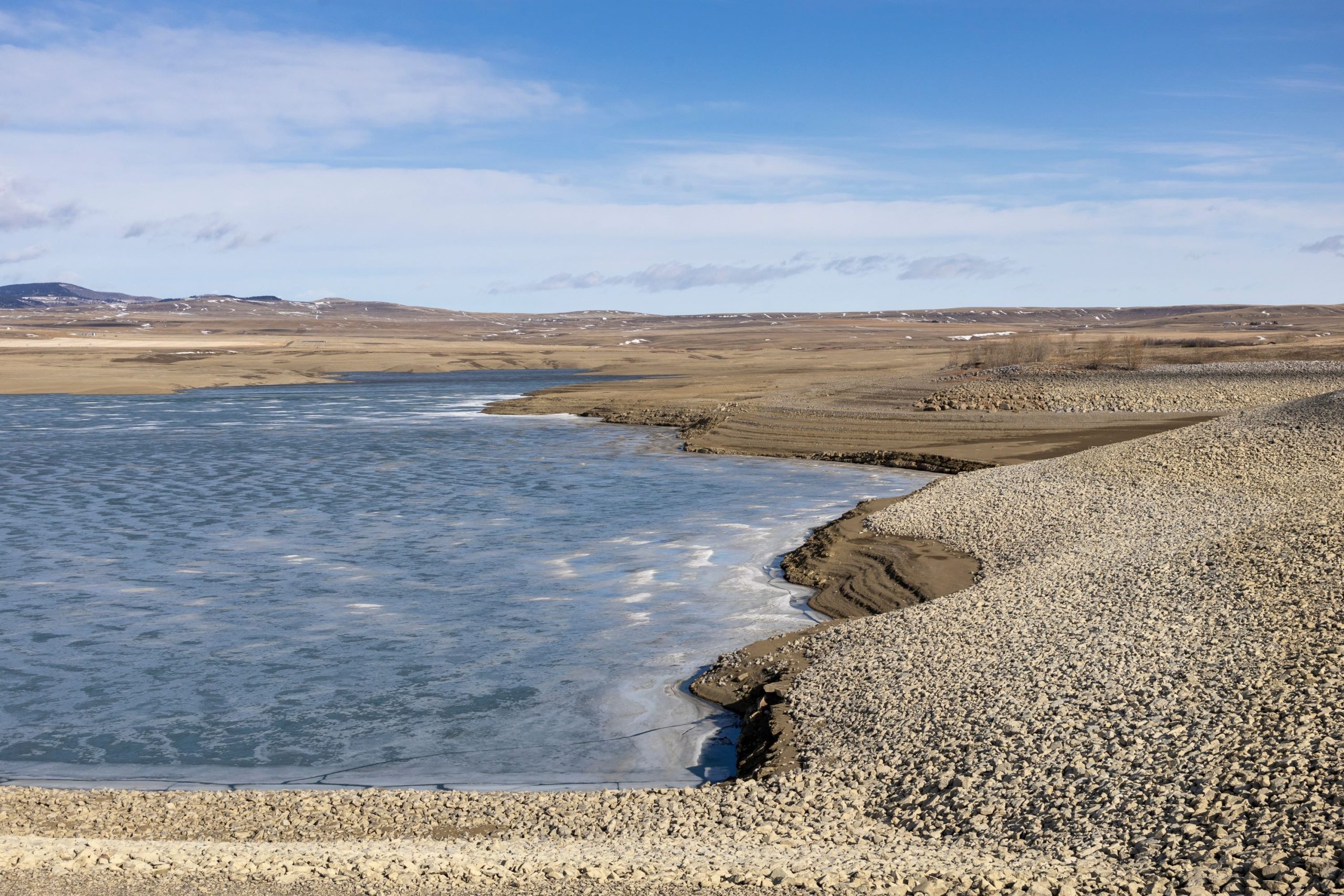
Province-Wide Rethink on Water Use: Essential for Agriculture’s Future
Back to: News & Updates
Province-Wide Rethink on Water Use: Essential for Agriculture’s Future
By Bijon Brown | Senior Policy Analyst, Alberta Canola
Water is the lifeblood of agriculture where farming is both a tradition and a key economic driver. The need for careful water management has never been more pressing.
With changing weather patterns, growing populations, and increasing pressures on our natural resources, it’s time for a province-wide rethink of how we use water. For farmers, this isn’t just about environmental sustainability but economic sustainability.
THE CURRENT CHALLENGE
While weather patterns naturally vary with normal wet and dry cycles, the increased volatility of droughts and floods over the past 10 years has had severe consequences for our industry. Longer periods of drought, damaging storms with heavy rainfall, wind, and hail, along with reduced snowpacks are making water and the growing seasons less predictable. This directly impacts crop yields and the overall profitability of farms.
At the same time, competition for water is increasing. Urban expansion, industrial growth, and environmental conservation efforts are all vying for the same limited resource. As water becomes scarcer and the cost of securing it increases, this places an additional burden on farmers who are already operating on tight margins.
THE NEED FOR A STRATEGIC APPROACH
The solution isn’t just about finding more water; it’s about using the water we have more wisely. This requires a strategic approach that goes beyond better irrigation, water storage, and soil health. It calls for rethinking how rainwater is captured and used on farms, as well as re-imagining the use of surface water in the 21st century.
Capturing excess rainfall and run off may need thoughtful consideration. There has been a change in rainfall patterns which have caused crops to undergo weather related stress and reduced yields. Although annual moisture may remain around the average, the timing and intensity are also very important for optimal crop growth. The most recent yield report from Alberta Financial Services Corporation (AFSC) indicates canola crop yields in irrigated areas are more than 50 percent higher than those on dryland. If farmers in dryland areas are better able to regulate moisture available to crops, yields could improve. This has been shown with tile drainage systems instituted in Saskatchewan and Ontario. The need for adaptations like this will likely increase as rainfall patterns continue to change.
As glaciers melt and the snowpack from the mountains thin, there is a need to rethink water use from Alberta’s major rivers. For instance, water net use (the difference between what is taken out and put back into the river) of cities in the province that are adjacent to or have rivers running through them is low relative to their total permitted use. This means we are losing water that could be used in our province to other jurisdictions, or it runs out to the oceans. What if, it is possible to use some of that lost water to irrigate crops, water animals, and do more value-added processing of our commodities? What if, instead of returning all city-treated water to rivers, some of it were diverted to reservoirs and aquifers for agricultural use? Could this lead to a noticeable increase in crop yields?
THE ROLE OF POLICY
Supportive policies are required to effect changes like those just previously described. This means the Alberta government, with federal support, would need to build new infrastructure like reservoirs, incentivize efficient irrigation, and update water laws to address changing weather and growing demands. Alberta Canola is committed to working with the Alberta Water Council and Team Alberta Crops to ensure the views of canola growers across the province are brought to the table when the discussion of policies surrounding water management arise.
BMPS CAN HELP IN THE INTERIM
It will take time for policies to be developed and implemented but there are things growers can do in the interim to help to retain moisture on farm.
- Reinstituting wetlands on-farm can help to slow rainfall runoff and help to recharge ground water which can increase the water table and soil moisture for crops in dry periods.
- The creation of shelter belts can reduce wind erosion of topsoil.
- Practices such as no-till, the use of stripper headers and leaving high stubble at harvest adds to organic matter on the ground that can capture snowfall in the winter and retain soil moisture for the growing season.
THE FUTURE OF FARMING IN ALBERTA
The future of farming in Alberta depends on our ability to adapt to a changing environment. By rethinking how we use water, we can protect our farms’ livelihoods and ensure the long-term sustainability of agriculture in the province. This is not just an agricultural issue; it is a matter of provincial resilience and economic security.
Farmers are on the front lines of this challenge. Alberta Canola recognizes the impact water has on achieving greater yields and the increased risk that farmers take each year by investing in crop inputs and hoping for adequate rainfall at the right time. As such, Alberta Canola is working with the government to find sustainable solutions. By working together and embracing novel approaches to water management, we can build a stronger, more resilient canola and agricultural sector—one that can thrive in the face of whatever challenges lie ahead.
